Safe Storage 101
If you own a gun, you have a responsibility to keep it secure.
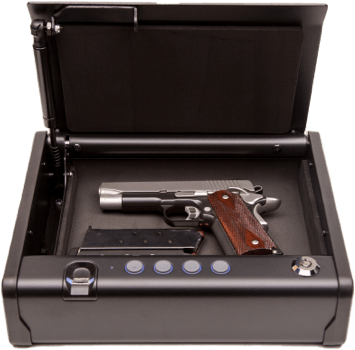
If you own a gun, you have a responsibility to keep it secure.

There are many ways to prevent your gun from being stolen or fired by somebody else.
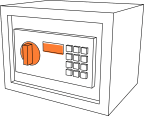
The most secure option. Can include biometric or electronic locking features.

Can be portable or bolted down for additional security. There are also options designed specifically for use in vehicles.
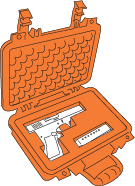
Can be used to safely secure your firearms at home and beyond.
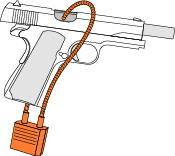
Uses a cable threaded through the barrel or action to prevent someone else from firing the gun.
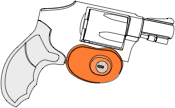
Fits easily over the trigger guard to prevent the trigger from being pulled.
These simple tips can save a life.
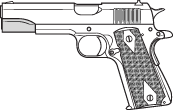
It is best practice to always unload your gun when it’s not in use. Take the time to familiarize yourself with how to unload and clean your specific firearm. When unloading, make sure the muzzle is pointed in a safe direction, preferably to the ground. Remove ammunition, and triple-check that the chamber is unloaded. Never let your guard down: Remember to always handle your gun carefully, as if it is still loaded.

There are several ways to safely lock up your firearm, including gun safes, lockboxes, gun cases, cable locks, and trigger locks. Some of these now include biometric and electronic lock options. For an additional layer of security, consider separating ammunition and firearms when locking them up.

If your gun lock uses a key, make sure you’re the only one who knows where it’s hidden. If the lock uses a combination or code, don’t use one that an older child might be able to guess, such as a birthday, an anniversary, or the last four digits of your phone number.
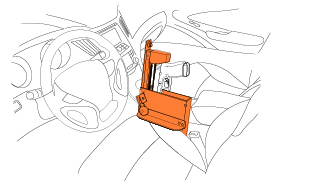
More and more guns in North Carolina are being stolen out of parked cars. If you leave a gun in your car, make sure the gun is out of sight and secured with a lock or in a gun case. Consider storage options designed specifically for vehicles, and don’t forget to lock your car too.
The above video contains information about basic firearm safety. It is not intended to be comprehensive of all types of firearms or situations. If you encounter a firearm and are not certain how to safely handle or clear a firearm you should contact local authorities to assist you.
Do you keep a gun in your home? Use this short checklist to make sure you’re storing it as safely as possible.
If you purchase a firearm, make sure you also purchase a lock or safe to keep it secure.
Interested in storing your firearm outside of the home? You have options.
The map below was created by Appalachian State University Professor John Paul Jameson, Ph.D., to help North Carolinians identify local options for temporary, voluntary firearm storage. Out-of-home firearm storage is especially helpful when someone in the household is experiencing a mental health crisis or is at risk for suicide. Firearm owners may also choose to temporarily store firearms outside their homes at other times, such as when traveling or when children are visiting.
To add a listing to the map or request a correction, email ncsafe@ncdps.gov.
This map is not a crisis resource. If you or a loved one is experiencing a mental health, substance use, or suicidal crisis, call or text 988 to reach the 988 Suicide & Crisis Lifeline, available 24/7.
The locations identified in the above map are operated independently from NC S.A.F.E. and the North Carolina Department of Public Safety (DPS). Accordingly, neither NC S.A.F.E. nor DPS have any oversight or control of these locations and in no way warrants or endorses any location identified. The map is provided merely for informational purposes. Before visiting a location found on this map, it is your responsibility to call ahead and verify important information, including but not limited to, how much storage costs, how long firearms can be stored, the manner in which they will be stored, whether a background check is conducted, and what documentation is required for both drop off and pick up.